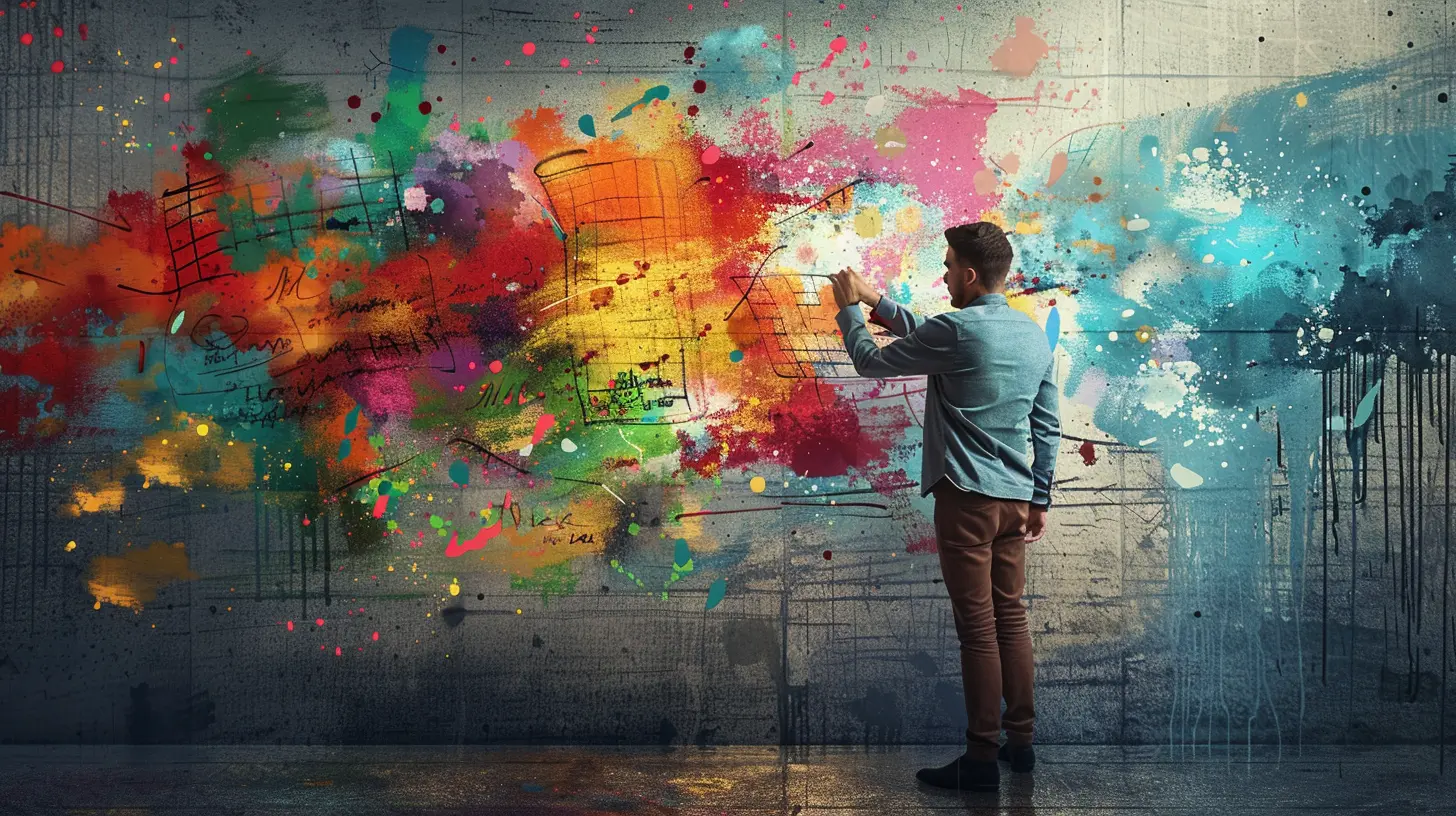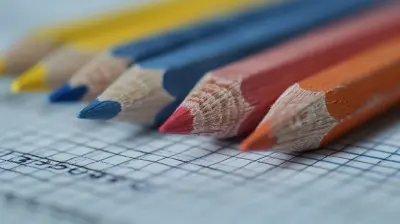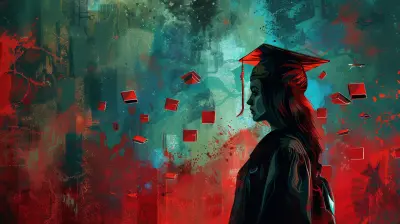The Power of Visualization in Problem Solving
12 June 2025
Ever hit a mental roadblock when trying to work through a tough problem? We've all been there—staring at a screen, a textbook, or a blank page, waiting for the light bulb moment. What if I told you that the key to unlocking your brain’s full problem-solving potential isn’t just thinking harder—but thinking differently?
Yep, I’m talking about visualization. It's not just for athletes prepping for the Olympics or artists mapping out a masterpiece. Visualization is a game-changer when it comes to solving problems effectively, creatively, and efficiently. Whether you're a student, a professional, or someone tackling life's day-to-day puzzles, harnessing the power of visualization can totally upgrade how you approach challenges.
What Is Visualization in Problem Solving?
Let’s break it down in the simplest way. Visualization means seeing something in your mind before it exists in real life. Just like how a chef imagines the final dish before they start cooking, or how an engineer pictures a bridge before pouring the first bit of concrete.When it comes to problem-solving, visualization is about turning abstract ideas into visual forms—like diagrams, flowcharts, mind maps, sketches, even mental images—to understand the problem better and cook up solutions more efficiently. It’s like giving your brain a pair of glasses to focus more clearly on complex ideas.
Why Does Visualization Work So Well?
Our brains are naturally wired for visuals. In fact, experts say about 65% of us are visual learners. We process images 60,000 times faster than text. Think about it—you probably remember faces better than names, right?Here's why visualization packs such a powerful punch:
- It simplifies complexity: Visuals strip away the fluff and help you focus on the core issue.
- It enhances memory: You're more likely to remember what you see than what you hear or read.
- It sparks creativity: Seeing a problem laid out visually can help you make unexpected connections.
- It boosts focus: Visual aids keep your thoughts organized and less scattered.
So, it’s not about being a great artist. It’s about giving form to your thoughts so your brain can work with them more effectively.
Real-World Examples of Visualization in Action
1. Students Studying Complex Topics
Ever struggled to memorize a complicated science concept or long historical timeline? Try drawing it out. Mind maps, timelines, and concept webs are like cheat codes for your brain. These visuals group information logically rather than linearly, making it easier for your brain to digest and recall later.2. Business Strategy
Ever sat through a meeting where someone tried explaining a new strategy and it just didn’t click—until they drew it on the whiteboard? Visualizing business plans, workflows, or data trends helps teams align faster and make smarter decisions. That’s why charts, flow diagrams, and dashboards are so popular—they help make sense of the chaos.3. Engineers and Architects
These fields practically run on visualization. Blueprints, CAD models, and schematics are essential tools. Without them, designing a functional building or system would be like trying to do a puzzle blindfolded.4. Athletes Mentally Rehearsing Movements
Visualization isn’t just about paper and pencils. It’s mental too. Athletes often use visualization to mentally rehearse their performance. They "see" themselves crossing the finish line or making the perfect shot, all in their minds. The same technique can help students or professionals imagine walking through a speech, a test, or a big decision.
Different Visualization Techniques for Problem Solving
Now, let’s get practical. Here are several go-to visualization methods you can start using today:1. Mind Mapping
A mind map is like a brain-dump turned beautiful. You start with the main problem in the center and branch out with related ideas. It helps you see connections you might otherwise miss and keeps your thoughts from becoming a mess of tangled wires.Use this when:
- You’re brainstorming ideas
- You’re organizing a complex topic
- You’re prepping for an essay or project
2. Flowcharts
Flowcharts are awesome for visualizing processes or decision paths. They help you see the logic (or flaws) in a system and are great for step-by-step breakdowns.Use this when:
- You need to understand a process
- You're troubleshooting or debugging an issue
- You're building workflows
3. Diagrams and Sketches
Don’t worry, you don’t have to be Picasso here. A rough sketch of a system, setup, or concept can work wonders for your understanding.Use this when:
- You’re designing something physical or digital
- You need to see spatial relationships
- You’re explaining a complex idea to someone else
4. Venn Diagrams
Perfect for comparison. They’re a simple but powerful way to identify relationships between different factors or sets.Use this when:
- You’re comparing two or more options or perspectives
- You’re analyzing overlap or differences in data
5. Visual Timelines
Timelines—especially interactive or color-coded ones—make it easier to keep track of events, actions, or deadlines.Use this when:
- You’re managing a project
- You’re studying historical events or scientific processes
- You’re mapping a personal goal
The Cognitive Science Behind Visualization
Now let’s peek under the hood of your brain. Why does visualization make you smarter? neuroscientifically speaking?When you visualize, you activate the occipital lobe—the part of your brain responsible for processing visual information. But that’s not all. Visualization also lights up areas that deal with attention, planning, memory, and problem-solving. It's like throwing a party and inviting all the smartest guests.
Studies in cognitive psychology back this up. Researchers have found that creating visual representations of problems improves comprehension and helps learners solve problems more efficiently. In short, visualization doesn’t just make things prettier—it makes them stick.
Visualization in the Classroom: A Teacher’s Secret Weapon
If you’re an educator, this is where it gets really exciting. Visualization techniques can transform your teaching style and improve student outcomes dramatically.Here’s how teachers can use visualization tools in the classroom:
- Interactive whiteboards for drawing out math problems or historical timelines
- Graphic organizers for essay planning
- Infographics to explain data sets or complex theories
- Color-coded notes to highlight importance and structure
Not only do students grasp information faster, but they also retain it longer. It’s a win-win!
Why You Should Start Using Visualization Today
Still wondering if it’s worth the effort? Let’s put it this way—visualization is like giving your brain a GPS for navigating complex problems. It doesn’t drive for you, but it makes sure you’re headed in the right direction.Here are a few compelling reasons to start now:
- Save time by spotting errors early
- Reduce stress by seeing problems clearly
- Increase creativity by exploring new angles
- Make decisions faster with visual comparisons
- Communicate better with visual explanations
You don’t need fancy software or artistic skills—just grab a notebook, a pen, and give it a go.
Common Visualization Mistakes to Avoid
Okay, quick heads up. Visualization is powerful, but only when done right. Here are a few common slip-ups to watch for:Overcomplicating It
Keep it simple. The goal isn’t to make art—it’s to make sense.Ignoring the Problem's Structure
Not all problems are suited to every visualization method. Choose the right tool for the job.Forgetting to Update
Your first sketch might not be perfect. Revise as your understanding grows.How to Make Visualization a Habit
Like anything else, practice makes perfect. Here's how you can start making visualization second nature:1. Start Small: Use it for your daily tasks or study sessions.
2. Experiment: Try different tools—like digital mind maps, sticky notes, sketchbooks, or apps.
3. Reflect: After solving a problem, look back and see how visualization helped (or didn’t).
4. Teach It: Share your visuals with classmates, colleagues, or friends. Teaching reinforces your own learning.
Final Thoughts: Seeing Is Solving
Visualization in problem solving isn’t some magic trick—it’s a practical, proven technique rooted in how our brains naturally work. Whether you're solving a math problem, writing an essay, starting a business, or figuring out your life goals, seeing the path clearly can make all the difference.So next time you’re stuck, don’t just think. Visualize. Sketch it out, map it, draw a line, make a chart—whatever helps your brain frame the problem more clearly. You’ll be amazed at how much smoother that mental road becomes.
Still unwilling to draw a mind map or a quick sketch? Get over the fear of doodling. Trust me—your brain will thank you.
all images in this post were generated using AI tools
Category:
Problem SolvingAuthor:

Monica O`Neal
Discussion
rate this article
2 comments
Caden Kearns
Visualization simplifies complex problems effectively.
June 21, 2025 at 11:08 AM

Monica O`Neal
Thank you! Visualization indeed distills complexity, making it easier to understand and solve problems.
Seth Sullivan
Great article! Visualization truly transforms problem-solving, making complex ideas more accessible. By picturing solutions, we can unlock creativity and clarity. Excited to apply these techniques in my own challenges! Thanks for sharing these insights!
June 12, 2025 at 4:26 AM

Monica O`Neal
Thank you for your thoughtful comment! I'm glad you found the insights valuable and are excited to apply visualization techniques to your own challenges. Happy problem-solving!


